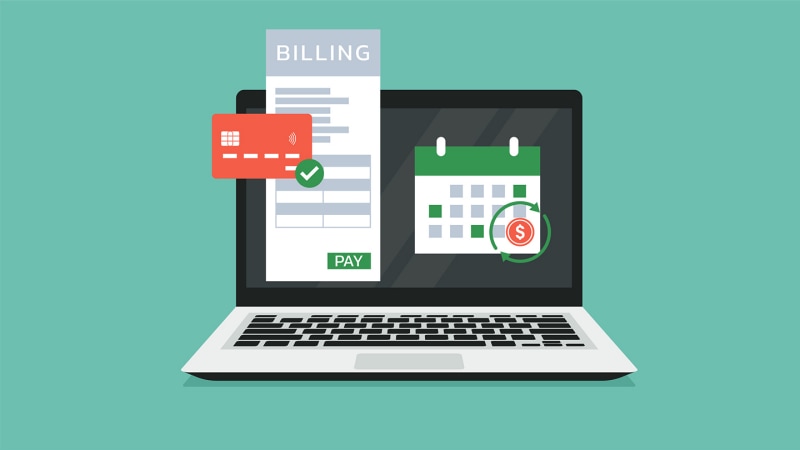640 credit score: A guide to credit scores

Quick insights
- A 640 credit score is considered to be “fair” by the main credit scoring models.
- You may feel limited by some of your financial options with a 640 credit score, but there are ways to navigate this.
- You may be able to improve your 640 credit score with consistent, healthy habits.
Whether you’re just starting out on your path to creditworthiness or looking to improve your score, you may be wondering what a 640 credit score means for you and your financial decisions. Let’s explore this in greater detail below.
Decoding a 640 credit score
A 640 credit score falls into the fair credit score range for both VantageScore® and FICO® scoring models. That means you may not have as much access to certain credit and financial opportunities as those with a higher credit score, but still you are a step ahead of those who have lower or no credit scores.
Below, we’ll go into more detail about what this score means for you and how scaling these credit score ranges can result in both short- and long-term financial benefits.
Implications of a 640 credit score
Having a 640 credit score means you’re just below a "good" credit score, which is typically a score at or above 661 for VantageScore and at or above 670 for FICO. Having a fair vs a good score can make the difference between landing a more favorable annual percentage rate (APR) or receiving an approval for a loan.
You may find it harder to achieve other life goals, such as getting approved for a lease or a mortgage. Even if you do get approved for a loan, you could face higher APRs as a result of having a 640 credit score.
Don’t fret—you can still navigate your financial decisions and take active steps towards improving your score over time.
How to navigate financial decisions with a 640 credit score
It might be a good idea to make wise financial choices with a 640 credit score. For example, if you start to make payments on time you could positively impact your credit history and if you continue to make payments on time and manage your budget to lower your spending, you could improve your credit utilization ratio (more on this later). Keep in mind that anytime you take out a new line of credit (for example, a personal loan), your potential lender will run a hard inquiry, which will temporarily cause your score to drop by a few points.
While a 640 credit score may limit your choices when it comes to credit cards, there are still other options for those with a fair credit score. And even in the case of credit cards, you can possibly get approved for several kinds, but they may not come with premium rewards and could have high APRs.
However, it may benefit you to improve your credit score before making your next financial decision. Let’s learn how you can do this below.
Strategies to help improve a 640 credit score
If you want to take your score from fair to good (and beyond), you may want to commit to making consistent, healthy financial choices. These build habits that over time can improve not only your credit score but your financial wellness. Below are a few strategies to help you improve your 640 credit score:
- Decrease your credit utilization. This is the proportion of how much credit you use against your total available credit. For example, If you use $5,000 of your $10,000 total available credit, your credit utilization ratio is 50%. When you lower this number, you help to improve your credit score. Credit utilization is a major factor in determining credit scores and should ideally be below 30%.
- Make your monthly payments on time. Payment history also makes up a large portion of your credit score. Showing lenders your ability to consistently make payments on time can help demonstrate creditworthiness and improve your payment history, which can in turn help improve your credit score.
- Consider enrolling in Chase Credit Journey®. This is a free online tool anyone (including non-Chase cardmembers) can use to view their credit score without impacting their credit. Additionally, you can use the credit score improvement feature, that is powered by Experian™. With this tool, you’ll receive a list of steps you can take to help improve your score over time and track your progress.
- Monitor your credit report. The more aware you are of what is happening to your accounts, the better your chances are for catching inaccuracies or signs of suspicious activity (such as accounts being opened without your approval).
- Keep your information safe. Using tools like credit monitoring and identity monitoring alerts provided by Credit Journey®, you can remain proactive about safeguarding your information and staying aware of potential threats to your credit.
- Consider keeping old accounts open. Even if you don’t regularly use your old credit card, keeping an old account open can help maintain your credit length. Use this card sparingly so that the account remains active, since some issuers close accounts due to inactivity.
- Focus on repaying your debt. Because your debt-to-income ratio is an important factor that lenders consider when determining your creditworthiness, you may want to prioritize paying down debts. Doing so could lower your debt-to-income ratio and help improve your score.
Summary
With a 640 credit score, you are not that far from improving it from fair to good (and even better!) With patience, diligence and healthy habits, you can improve your credit score over time. Remember, there are tools and resources available to you. By utilizing these, you can feel empowered to make the right financial decisions for you.



